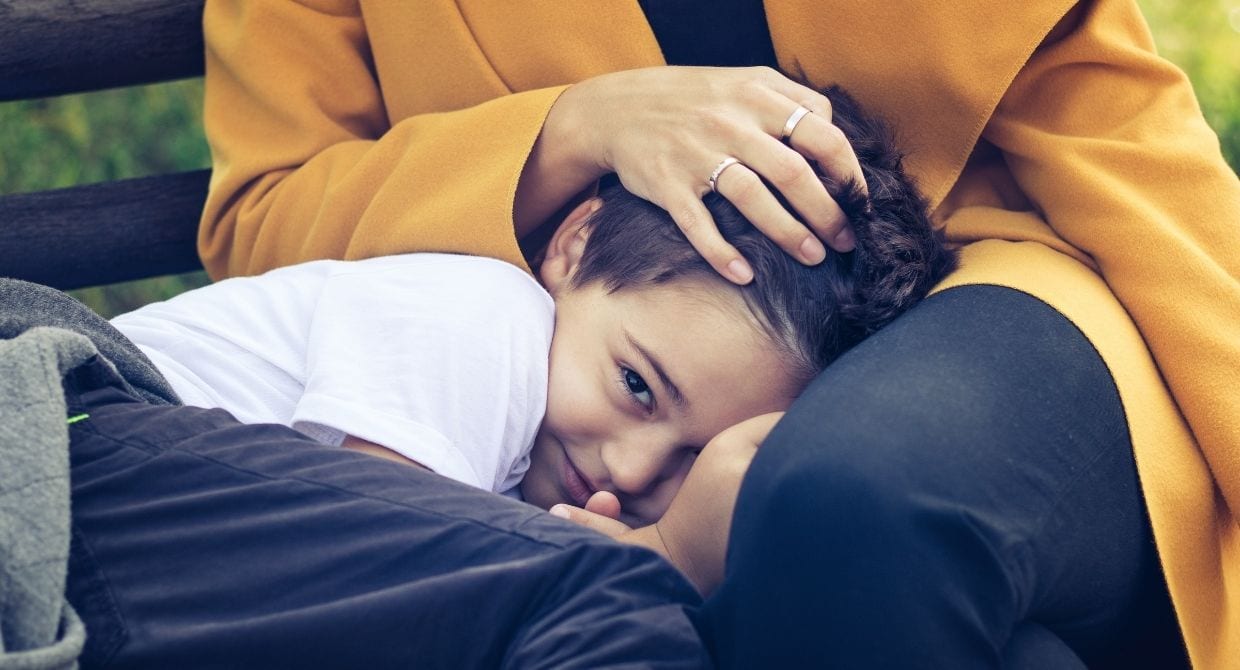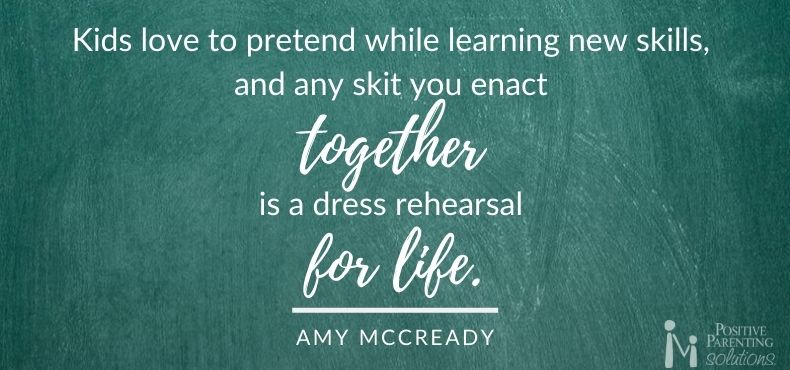Helping Shy Kids Reach Their Full Potential

Every time family or friends are over for dinner, your 5-year-old won’t even say “hi.” He hides behind your leg, refusing eye contact instead.
It’s been three weeks since school started, and your daughter still hasn’t spoken to anyone. Her teacher asks, in all seriousness, if she’s mute.
Many parents feel at a loss with their child’s timidness. They think they need to defend or excuse their child’s hesitation to acknowledge others, speak up, and participate.
Parents also fear shyness will be received as rude or inept.
They even worry their child’s bashfulness will lead to missed opportunities and a lusterless life.
Of course, children have different temperaments. Some are less outgoing than others. Their shyness may be ongoing, temporary, or situation-dependent.
Shyness itself isn’t a one-size-fits-all term. Children’s social reservations stem from a variety of causes. These tendencies may be normal and harmless. Others may require professional intervention (5 Key Signs Your Shy Child Might Need Help).
Insider Tip: An amazing way to build kids’ confidence is through Encouragement. Use our FREE list of encouraging words and phrases as a starting point.
Here at Positive Parenting Solutions, we know the importance of not labeling kids or pigeonholing them into a particular bucket.
When we use the term “shy” in this article, it’s a loose definition of a child’s more bashful actions. It’s not a label, diagnosis, or judgment, because social reluctance can be complex.
What isn’t complex is that it’s just one small facet of the human being you love and cherish.
Timidity can actually be a sign of thoughtfulness and other exceptional traits. But emboldening kids to speak up and engage is important, too.
Maybe your butterfly just needs a little more time in the cocoon. But you know that inside, there are truly magnificent wings.
If you have a kid who tends towards shyness, you can embrace and gently challenge that reticence. It’s a balance that nurtures natural tendencies while still helping your child learn and grow.
Here are six strategies to help shy kids bloom–in their way and in their time:
1. Trade the ‘Shy’ Label for Encouragement
Labels are an easy way to categorize a person or a personality trait.
The problem is, they can be dismissive, oversimplified, and downright incorrect.
For example, being shy is not necessarily the same thing as having stage fright, introversion, or social anxiety. It can be confusing and harmful for a child when we unintentionally lump these distinctions into one.
Verbally labeling children as “shy” might lead them to believe there’s something wrong with them. Why else would he mention that, unless it’s bad? When labeled in front of siblings, it can even enhance sibling rivalry and competition.
The idea can become deeply implanted. Kids may start to believe their shyness defines them.
Even our positive labels are problematic: She keeps telling me I’m pretty. Beauty must be really important.
Instead of labeling personality traits or behavior–whether positive or negative–we can encourage our children’s positive actions.
For a 4-year-old refusing to speak at his well-check exam, you may be inclined to tell the doctor he’s shy. Instead, you can encourage your child when you notice positive behavior:
“I appreciate that you’re cooperating with the doctor when she asks you to breathe deeply for her stethoscope. That’s really helpful!”
The doctor will likely notice your cues and help encourage your son’s helpful actions, too. Despite his silence, there is no need for labels!
To the 12-year-old too reluctant to strike up a conversation with her new basketball teammates, withhold saying, “It’s hard being shy,” or “I know you’re shy, but you’ve got this!”
Instead, you can say:
“I know it can be hard meeting new people. Especially if you’re worried they won’t be very receptive. But I’ve noticed you’re a good team player and doing lots of passing on the court!”
Even when the bad outweighs the good, we can encourage a silver lining.
When kids feel positive, they begin to gain confidence. And confident kids are more likely to emerge, at least partly, from their protective shells.
2. Help Shy Kids by Practicing Social Skills Together
Not all kids are born bounding around the playground making friends with everyone they meet.
Some enjoy playing alone. Others want to make friends but don’t know where to start.
All children, whether they’re withdrawn or more gregarious, benefit from rehearsing their skills in hypothetical social settings.
One excellent way to practice is to Take Time for Training:
Take Time for Training
Like learning to brush their teeth or ride a bike, kids can practice social interaction with us at home.
It can start with the Ps and Qs of manners. Then, we can go far beyond these important pleasantries.
When we take time to train our kids on social behaviors, we start by modeling those actions ourselves. Next, we let them practice that etiquette at home or in other safe surroundings.
It could be pretending to strike a dialogue or introduce themselves to new people. For outgoing kids, it could be training them to take turns speaking, listen intently, and to recognize personal boundaries.
The gist is, we can’t assume socializing is innate knowledge. Kids often need a crash course.
Two-Way Role Play
Training isn’t just going through basic vocabulary and motions. You can really have fun with it when you use Two-Way Role Play.
This, like Take Time for Training, is a tool we use in our Positive Parenting Solutions course.
Not only is it more fun and engaging for kids when we role-play scenarios–it solidifies the lessons we’re trying to convey.
Your child can begin with his usual role–maybe the socially timid kid at Cub Scouts–while you play a fellow cub. In this scenario, the imaginary den leader has just asked the scouts to pick partners for a team-building activity.
Walk up to your son (you’re playing an equally shy “kid” or a more outgoing one) and say, “Would you like to be my partner?” Or, “I’m available if you still need to pair up.”
Now, switch roles! Your son can ask you to partner up. You can say “yes” or even say “no, I don’t want to partner with you,” to let him practice his response to rejection.
That could be walking up to the den leader (your next starring role) and quietly saying, “I’m still looking for a partner. Can you help?” Then, your son can play the den leader while you, the scout, ask for partnering assistance.
Kids love to pretend, and any skit you enact together is a dress rehearsal for life.
And anything that’s been rehearsed well has a better chance of succeeding.

3. Avoid Shoving Shy Kids Into the Limelight
Training eases kids into real-world challenges. But they’re likely not ready for an immediate onslaught.
While we ideally want to expose our kids to as many new experiences as possible, we don’t want to pressure them to overly participate or perform.
Maybe you convinced your wallflower to attend the Homecoming dance with a friend. The thought of her missing such an iconic event broke your heart. But when her stag date ditches her at the last minute, she begs you not to make her go. She doesn’t want to be there without her good friend; she says she’d feel embarrassed.
You already bought the tickets and the dress. You know she could still have fun with a more adventurous attitude. (Clearly, you have FOMO on her behalf.)
But going could also leave her traumatized.
Sometimes kids do need a little boost. But other times, we need to take a moment and listen to their concerns. Pressuring them into a trial by fire may not help them through their shy feelings–it could force them to dig deeper.
Instead, you could encourage your daughter to take a smaller baby step, like going to the pre-dance dinner with everyone. It’s still a way of putting herself out there, without as much pressure. This is a great technique that Renee Jain mentions in her program for anxious kids, Go Zen!
Or, maybe your reserved 6-year-old has been taking piano lessons for two years and loves it. But, when her teacher suggests she participate in an upcoming piano recital, the idea terrifies her.
You can say, “I think everyone would love to hear you play, and you should be proud of all the practice you’ve put into the piano. But, if you really don’t want to perform, that’s okay.”
Then, you can not only encourage her to try again next time, but you can recommend she take the small first step of attending–this go around–as an audience member. She can still cheer on the other friends’ performances and support her instructor.
But you don’t have to force her to directly participate. (As much as it would fill your heart to see her on that stage.)
Pro Tip: When it comes to school, parties, or any group activity, it helps timid kids to arrive early. This keeps the spotlight off them and allows time to settle and adjust.
4. Trust in Your Shy Child’s Strengths
We don’t want to force reluctant kids into the limelight. It can backfire.
But, we do want to set shy kids up for success. This includes having faith in their abilities.
When your 4-year-old refuses to answer a fawning passerby saying, “You’re so cute, how old are you,” you once again feel embarrassed. The urge to say, “Sorry, my kid is shy,” creeps up.
But here’s the thing. As hard as it may be, there is no need to coax or answer on her behalf. Simply wait in silence and give your daughter a chance to think of her own response.
Giving her this opportunity to struggle a bit–in a safe, non-traumatic scenario–reinforces that you have faith she will speak up. It also gives her practice responding. And, the more opportunities she has to speak for herself, the easier it will be for her in the future.
If she still doesn’t speak after a generous while–and you feel the need to keep appearances–you can change the subject with the nice passerby.
You can say, “Thank you. Beautiful weather today, isn’t it?”
There’s no need to excuse your daughter’s silence or chastise her for not responding, especially in front of the stranger. You can just model your own response and leave it at that.
Maybe, she’ll be ready to answer next time.
5. Raise Shy Kids to be Confident
When we trust in our kids, we are telling them we believe in them.
This is the beginning of convincing them it’s worth believing in themselves.
It starts by not labeling them as “shy.” Even if they are sometimes shy.
Then, it means granting them choices, like in a Decision-Rich Environment. Providing age-appropriate choices throughout the day allows kids the freedom to make mistakes, learn from them, and move on–possibly leading to a different decision next time with better results.
Pro Tip: For Positive Parenting Solutions Members, review our Decision-Rich Environment tool in Step 3, Lesson 21 of the 7-Step Parenting Success System® course.
With some success at managing life’s little challenges under their belts, kids realize they can rely on themselves to work through bigger hurdles like social awkwardness and occasional shyness and will be well on their way towards satisfaction and independence.
Even if kids are never fully confident in social situations, they can be self-assured in other areas of life.
Encouraging them to help around the house, do homework on their own, and dedicate themselves to their passions and strengths are all great ways to build confidence, make them comfortable in their own skin, and enable them to contribute to the greater good in ways other than making great conversation.
6. Establish Routine Family Meetings
Don’t let the word “meeting” deter you! This isn’t all business. Family Meetings can be beneficial and enjoyable!
Family Meetings offer kids the chance to voice their concerns–whether it’s wanting a break from martial arts lessons or frustration with a sibling who’s grabbing toys. They can also bring solutions to the table.
Through Family Meetings, children learn their value within the family and as individuals. They understand that their opinion matters. And, they learn that communication is an integral part of problem-solving and healthy dynamics.
It’s also fun to rotate meeting leaders each week! With a little guidance, kids as young as four can take turns keeping the meeting organized and on task. It’s a great way to practice leadership and communication skills!
Especially when held routinely (ideally, once a week), Family Meetings add rungs to the ladder of confidence and allow shy children to shine.
Speaking to well-known family members around the dining room may not be identical to working with classmates in an assigned group project or making new friends. But, like training, it’s one step closer.
Final Thoughts
Your child is on a personal social journey.
It may not look like your friend’s kid, who spoke to anyone who would listen at age two.
It probably won’t look like your teenage niece, who craves attention and has a bazillion friends.
Your child’s journey may not even be remotely similar to yours.
But with these six strategies–along with your love and patience–your child is right where he should be.
Don’t sell his potential short.
What You Should Do Next:
1. Get Quick Actionable TIPS delivered to your inbox
Sign up for my newsletter for parenting tips to help you create a happier home and become the parent you always wanted to be. Plus, when you subscribe, I'll also send you a copy of our strategy-packed guide 10 Tips for Better Behavior – Starting NOW!
2. Unlock the secrets to easier parenting in my FREE CLASS
Register for my free class called How to Get Kids to Listen, Without Nagging, Yelling or Losing Control. Classes run several times per week to accommodate your busy schedule.
3. Transform your family with the 7-Step Parenting Success System® Course
Join the hundreds of thousands of parents who have transformed their families with the 7-Step Parenting Success System® Course. Learn the tools you need to raise happy, respectful, responsible kids and create the family life you always dreamed of having.
About the Author






